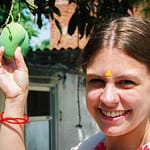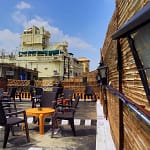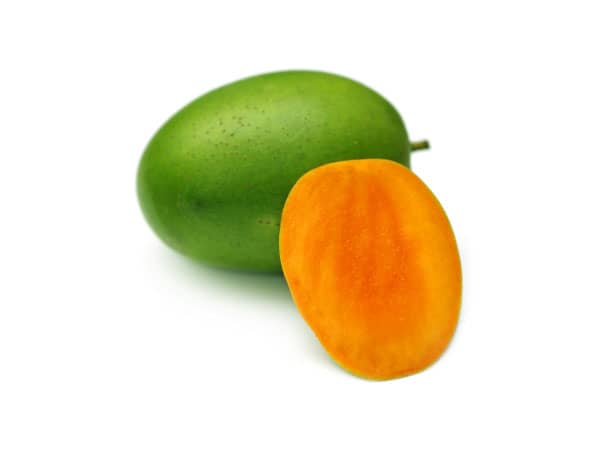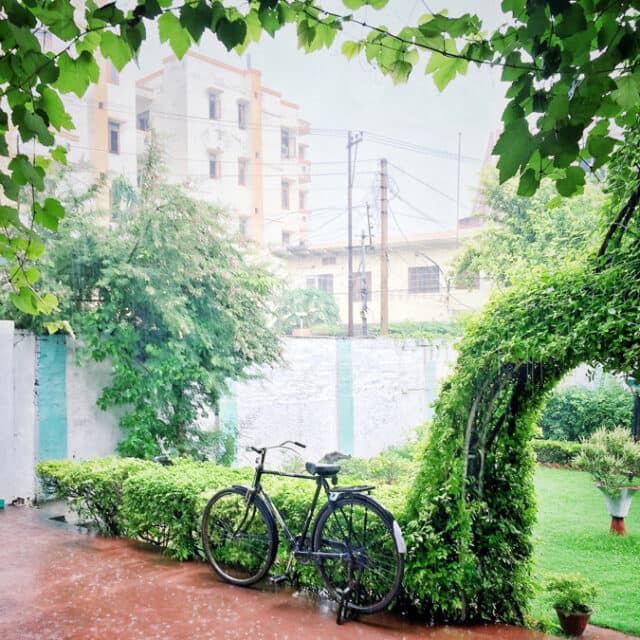How big a deal can a Mango be? Believe me, a huge one. Mango really is the king of all fruits and a tacit Indian religion. But there is a king of all kings out there that I oblige myself to educate you of: the Langra Aam (Hindi: लंगड़ा आम). The rest of this post may be argumentatively opinionated.
Mango, in Hindi, is called Aam.
Now, I wouldn’t blame anyone who dislikes mango or is not a fan, especially if they haven’t tasted the real deal of mangoes yet. There were nobler times when I didn’t imagine that disliking mango was even a possibility. I mean…who dislikes mangoes? You must be crazy.
My wife is a classic example. She boldly proclaimed her distaste for mangoes when we had first met. One mango season later, my German drools over them. But then who can blame the Germans for not being crazy in love with mangoes? Those mediocre-tasting Latin American fruits filling up the supermarket shelves here would be graded average at best to Indian standards.
I’m sorry Brazil and Peru – you guys tried, but your mangoes are just not mango enough. I have also had the misfortune of trying Thai mangoes. Whereas Thailand has time and again won me over with its amazingly delicious fruits, mangoes there were utter disappointment.
The Best Mango in the World
A funny story casts a Spanish traveller at its heart. This fellow had spent quite some time in SE Asia before arriving in India, Varanasi being his first stop in the country.
Later in the day on his day of arrival we were dining out together with another chap from Mexico. All avid travellers, we were sharing our travel experiences. Among his stories he happened to boast of how the mangoes in the Philippines were so amazing and sweet – supposedly the best mangoes in the world. I was forced to remark, “Really? The best mangoes are the ones in the Philippines?” The Spaniard affirmed, “Yes!”, confidently. With a bit of prudence, I chuckled, and let go of the topic.
The following night we were all chilling in my garden when our house help placed a plate full of peeled and chopped mangoes on the table for us to snack on. The Spanish fellow went first… “Oh my god, is this mango!? It’s sooo good! It’s sooo tasty!”, he remarked in awe and disbelief of his own. Continuing, “This is the best mango of my life! I am so sorry for saying that the mangoes in the Philippines are the best…”, he humoured. “I take it back! It was a mistake!”
The Mexican, whose first time also it was trying Langra Aam, lacking the basis of comparison to the mangoes from the Philippines, appeared glee about eating possibly the best mangoes in the world. “It’s so good! It’s amazing!”, he had remarked. It goes without saying that Mexico doesn’t have mangoes nearly as good either.
The Indian Mango Culture
Oh yes, mango is not just a fruit. It is a summertime culture. Not all Indians sail in the same boat. Taking life easy, and chitchatting about crass & sophisticated things alike is an essential part of the Indian culture. How could mangoes be left behind? An ongoing debate between mango lovers can be overheard wherever there is a mango fiesta going on during the mango high season. And that would be pretty much every household. A common debate is between the Banarasis and Lucknowis – Langra vs Dusshehri.
I don’t know them all – there are hundreds and apparently thousands of mango kinds out there. Most people around me – including myself, of course – prefer among Langra, Chausa and Dusshehri. My favourites lie in that sequence. I’ve come across quite a few people proclaiming their love for Alphonso – another kind of mango popular in other parts of India. Alphonso seems to be the only competitor to Langra, at least theoretically, as that is the one name that keeps popping-up over and over again. I did try it once or twice but couldn’t bring myself to like it. It’s not even close to being as mangolicious as Langra. Therefore, chances that there is a better mango out there are grim. I, hence, live by the motto that ‘Langra Aam’ is the king of all fruits.
Langra Aam: Name Origins
Aam means ‘mango’ in Hindi, and Langra means ‘walking disabled’. The story goes: Once upon a time an outsider wandered into a region of the state of Uttar Pradesh, and planted a mango tree there. Eventually when the tree fruited, this amazing new mango was so delicious that it became popular among the people in no time. Since no one knew the man’s name or where he came from, they named the mango after the man’s only attribute that they could associate with – Langra.
Where and When?
Eastern Uttar Pradesh or Bihar. Native to this region of India, Langra Mangoes are greatly popular and widely available here during the summer months of May, June and July. Although these days stocks come in as early as mid-April and last as late as mid-September, it is hard to believe that these stocks were not ‘modified’ or manipulated in some way. For all I know back in the days this wasn’t the case.
These days there is an increasing popularity of Langra Aam across much of northern India, including the Delhi NCR. Delhi is still catching up on the Langra fever. After all, a decade or two ago it wasn’t even possible to buy the king out there. This mango advantage, I would say, has arrived in Delhi due to the large scale migration of the people of UP & Bihar into the NCR, which began at the break of this century along with the economic boom.
Whenever people migrate, they bring with them to their new home their food habits. Naturally, when the migration is large scale, the societal impacts of food habits are larger as well.
Randomly, though: Do you know where you should head to during the next Langra Aam season? To Varanasi. And you can book your stay at my hostel there.
What’s your favourite kind of mango and from where? Do you dare dispute the king of all fruits? Comment and let me know!











Mangoes are a very common food used in a number of cuisines around the world especially in the tropics. The fruit is used in all types of meals and courses such as breakfast, lunch, dinner, dessert and used in refreshing juices.
Indeed it is a fantastic fruit! However, in India, it is mostly just eaten raw as a dessert. And, of course, some fruit juice brands have capitalised on the opportunity as well.